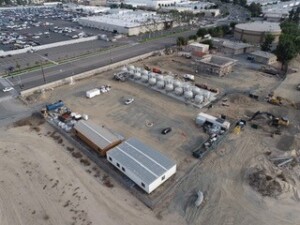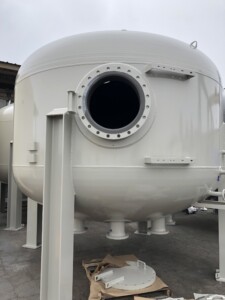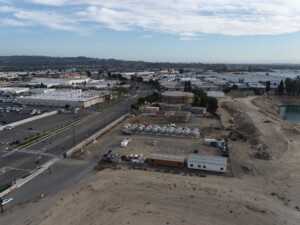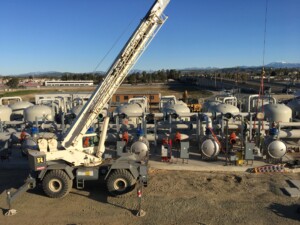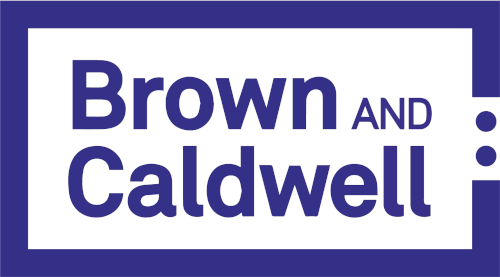Challenge
The city of Anaheim’s water supply historically comes from groundwater pumped from local wells, with the balance coming from imported water from the Colorado River or the State Water Project. In February 2020, the State issued revised drinking water “response levels” for per- and polyfluoroalkyl substances (PFAS). A portion of the city’s wells exceeded these levels and had to be taken out of service. The City of Anaheim needed to develop a treatment solution for its groundwater wells to restore its critical local water supply. The high cost of imported water ($1.1 million per month) was driving the City to expedite restoration of local well production. The City elected to use collaborative delivery to define a project, procure a design-builder, and complete the project within budget and on an accelerated schedule.
Approach
The project is being delivered in two phases over three years. Phase A includes four sites and eight groundwater wells restoring 50% of its groundwater. Phase B includes five sites and six groundwater wells, restoring the remaining groundwater supply. The 14 wells (12 existing, 2 new) have a total treatment capacity of 73.2 million gallons per day (mgd). The projects will add new non-regenerable, long-life, ion exchange (IX) treatment facilities to provide removal of PFAS chemicals. The projects will also include well rehabilitation and other related improvements. This multi-procurement, owner advisor (OA)-managed approach was determined to be the most efficient way to expedite restoration of the city’s local groundwater treatment supply and minimize its reliance on expensive imported water.
The City decided to use fixed-price design-build (FPDB) to implement both phases. A major driving factor in this decision was price and schedule certainty, predicated on the need to accelerate the project completion to recover the local water source as quickly as possible. The City’s charter (i.e., procurement law) does not allow the use of progressive design-build. The City hired Brown and Caldwell (BC) as OA to provide procurement, technical, and delivery services, including review of the design-builder’s design submittals and construction oversight.
After establishing a broad procurement strategy, BC conducted market outreach to inform the design-build market of the upcoming RFQ/RFP, obtain feedback on commercial matters, and increase market participation. This proactive outreach proved to be very successful. For example, the City received submittals from nine well-qualified design-build teams for Phase A and shortlisted three teams to advance to the RFP response period.
During the RFP phase, the City and its OA organized confidential technical and commercial 1:1 meetings for both projects. These meetings provided an opportunity for short-listed respondents to ask questions and have a dialogue with City staff regarding the project, its requirements, and commercial and contract terms, enabling the respondents to better prepare their proposals.
The City used a scoring model similar to best value to select a design-builder for Phases A and B. The evaluation and scoring approach considered price and non-price factors. Per state statute, price was evaluated on capital and life cycle price factors. CDM Smith was awarded both projects.
CDM Smith’s role on the project includes preliminary and detailed design, permitting, construction, commissioning, startup, and testing. CDM Smith prefabricated the above-ground piping systems and is performing the on-site installation of the treatment systems. CDM Smith is also self-performing electrical and instrumentation and controls (E/I&C); fabrication of SCADA panels; and SCADA programming.
After carefully studying the water quality at each of the nine sites, the team developed a robust PFAS treatment solution focused on providing reliable treatment, operational flexibility, redundancy, low life cycle costs, operational resilience, and adaptability. The solution also considers the potential future treatment and specific expansion needs at each site. The treatment process includes pressure boosting where needed, pretreatment using cartridge filters, IX vessels in a leadlag operational configuration using single-use IX media, and sodium hypochlorite disinfection to maintain a chlorine residual in the distribution system.
Following the evaluation of several pretreatment options, the design team selected horizontal cartridge filters for the reduction of total suspended solids (TSS). These filters, which are proven, effective, and reliable for removing TSS greater than 5 microns as required by resin manufacturers, provide the City with redundancy, ease of maintenance, and life cycle efficiency. Not only were they determined to provide the lowest life cycle and capital cost, but they offer a range of advantages, including the ability to be maintained from ground level, which improves operator safety and the ability to test different media to confirm cost and performance and accelerate data collection. Combined with SCADA programming, these filters provide a predictive tool for resin changeout.
By designing with operations in mind and through the close partnering of the design-builder’s in-house operations staff with City staff, CDM Smith employed a training and transition program that will be integral to the seamless transition of the facilities to the City’s operations staff with the goal of achieving continuous long-term operational success.
For the construction management team (CMT), it was imperative to continue the momentum of the aggressive schedule once the contract was awarded to the design-builder. The CMT has been committed to the success of the project, has sufficient resources necessary to assign to the project, and has been prepared to move expeditiously with the extensive contract documents. As a design-build best practice, the team is using a collaborative process that involves open communication and transparency in all of its dealings. As the design-builder is responsible for quality, the CMT provided over-the-shoulder reviews to confirm that the design-builder meets the owner’s standards and conforms to the contract requirements. An additional key role for the CMT is to manage change on the project. This involves providing timely reviews of proposed changes, along with the merits and entitlement of the change. The contract addressed an adequate amount of contingency/allowance items, which supported change management.
Results
The project team accelerated the procurement schedules by implementing several actions and Design-Build Institute of America (DBIA) best practices. These included near-parallel development of procurement documentation; defining RFQ and RFP submittal requirements to reduce evaluation demand/time on the selection committee; providing the draft DB agreement in the RFQ; and using confidential 1:1 meetings during and between procurement steps to gain early alignment with design-builders on commercial matters, thereby reducing the negotiation period duration. The FPDB projects required hybrid contract terms to reasonably accommodate changes in scope and market conditions driven by supply chain volatility.
The procurements also included the DBIA best practice of focusing design criteria primarily on performance requirements, such as site condition constraints, mitigation requirements, schedule constraints, water quality (PFAS and other components), operational flexibility, durability, and resilience requirements. Prescriptive elements were the exception for those instances where the City’s needs or a regulatory driver dictated a predefined solution. These included flow or capacity throughput, turndown, IX lead/lag requirements, compliance with local regulations, and resin selection. By limiting prescriptiveness, the City promoted design-builder innovation and maximized performance risk transfer, which was a key procurement objective for the City.
To address supply chain issues, the team collaboratively approached the challenge of volatile pricing and material delivery. The team established a hybrid pricing model to provide transparent, open-book pricing on select items that were susceptible to unstable market pricing, while using fixed pricing for the remainder of the project, creating a fair risk model. Additionally, the team collaborated on contingency planning to overcome supply chain delivery issues so water could be treated and delivered early to the city.
The team also instilled the process of continuous improvement and constant communication. Co-location is key to keeping open communication between the CMT and the design-builder, and it should be initiated prior to the construction phase of the work—the earlier the better.
When an owner, its OA, and the design-builder are in full alignment on a common set of project objectives (including budget), technical innovations, commercial strategies, and delivery plans are more easily endorsed. Maximum transparency increases the ability for all parties to know, orient, and drive to a common purpose with a “best for the project” attitude.
Phases A and B are currently under construction and scheduled for completion in the fall of 2023.

